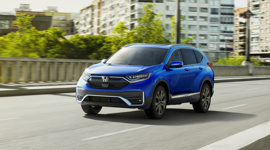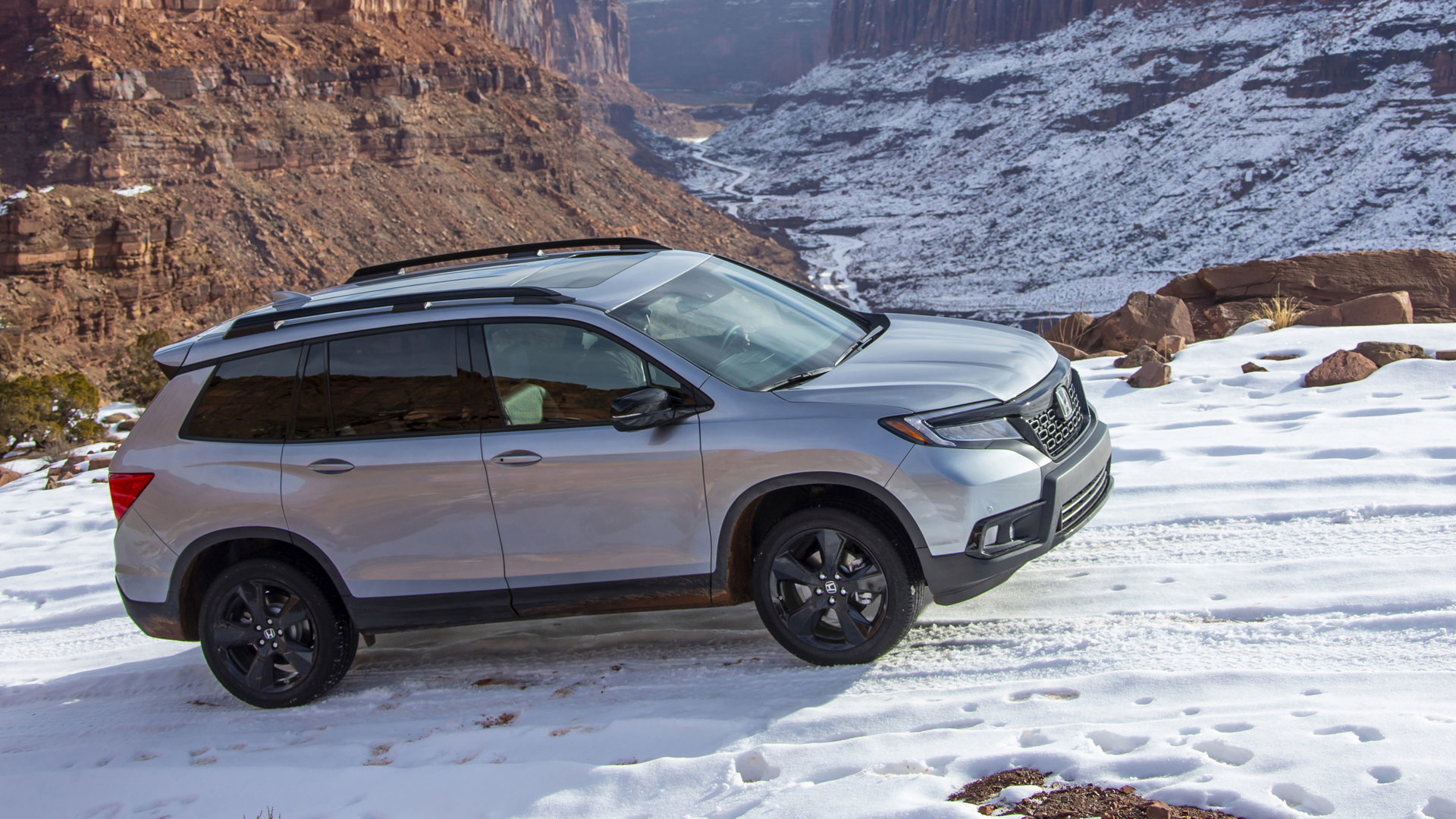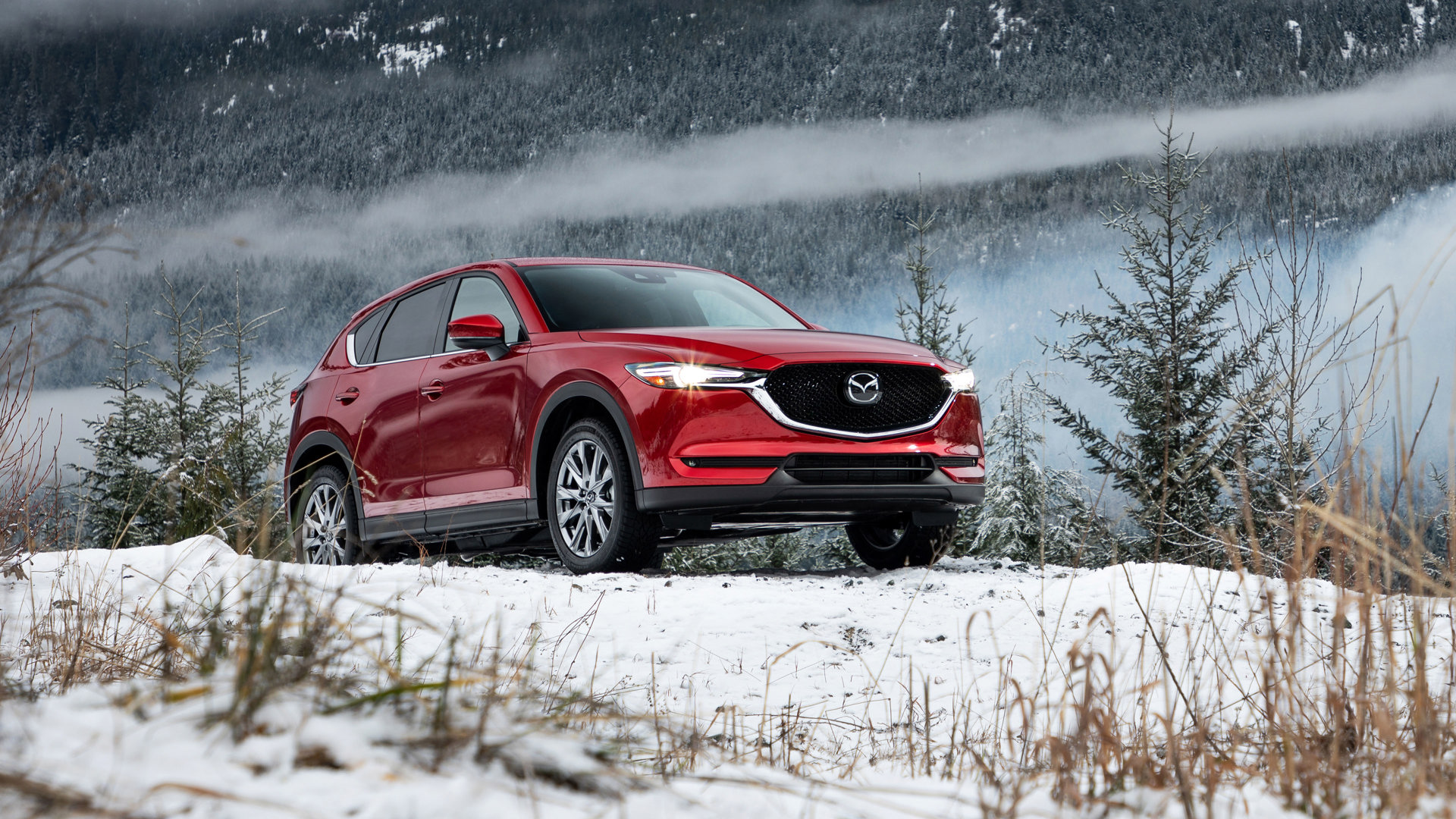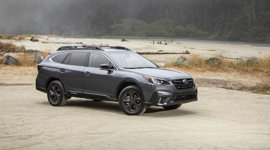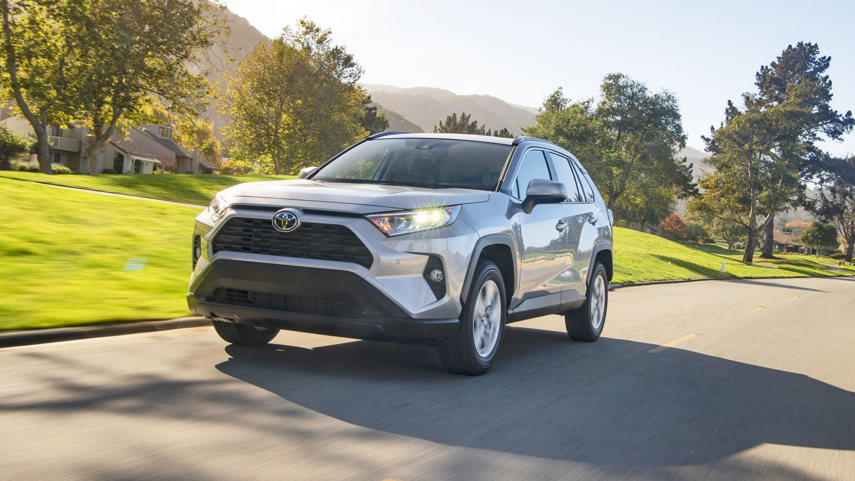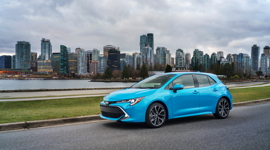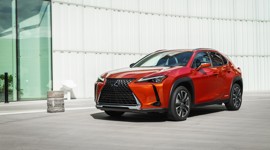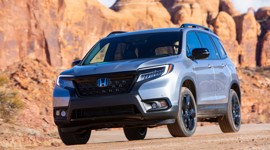While adding a third row to small crossovers is the new hotness, it’s the smaller two-row segment that’s still on fire in the Canadian marketplace. These crossovers and SUVs are everywhere, and it feels like there are new ones every week. Of the five two-row SUVs on our list of finalists, one is a new name for this year, two are completely overhauled models with the same name, and a fourth is heavily revised. This is huge segment for Canadians and automakers want to make sure they have their bases covered in this popular category.
Why are two-row (or compact) SUVs so popular? We’d chalk that up to the two-row crossover’s improved visibility over the traditional family sedan. It’s taller, so you can see farther down the road. That gives drivers a more secure feeling, which everyone wants. The crossover’s extra space in the back also means there’s loads more room for passengers and cargo than in a sedan. Of course, these SUVs are popular because they also offer the extra confidence of all-wheel drive, an important feature for Canadian car buyers.
Our panel of more than 20 automotive experts looked at every single two-row, compact crossover on the market in Canada, considering a wide range of the things that you, the car buyer, looks at before making your own decision. Important considerations like value, innovation, tech, performance, safety, quality, efficiency, and just how good a vehicle is at doing that job it’s meant to do. In this segment, practicality and space are key, as are comfort, value and safety. And while being fun-to-drive isn’t the biggest box on the checklist, we still haven’t forgotten about that either, because this is, after all, where you’ll spend most of your time: behind the wheel.
Our jury voted to advance these five vehicles to the final round of voting for the best two-row crossover, a vehicle we feel confident recommending to our friends, family and you, the Canadian car buyer. There can only be one winner, though, and we’ll reveal that winner on January 20, 2020.
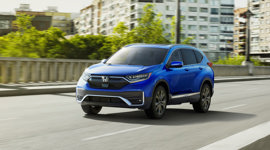
Honda CR-V
Honda’s CR-V manages to hit a sort of magical sweet spot in this segment. It’s the perfect height for tall drivers to get in and out, and it’s also perfect for short drivers to get in and out. Give some of the thanks to the door sills that are nearly level with the floor, and some to the massive door openings, which also make it easier to install child seats or load up the vehicle. The CR-V might be the oldest of the five finalists on this list (it hasn’t gotten significant updates in a while), but it’s far from dated. Even the base $26,490 LX model gets the same engine as the top Touring trim. A 1.5L turbocharged four-cylinder with 190 hp and 179 lb-ft of torque. A CVT helps the Honda get up and move, but we said the drivetrain sounded like “a demonic leaf blower” under acceleration, however, it’s quiet at speed. It’s not the most fun-to-drive crossover, but the CR-V is user-friendly and well-sorted.
Honda’s LaneWatch camera system is a different solution to the blind-spot warning light of most models, but we like the ability to see what’s in the right blind spot on the 7.0-inch infotainment system’s screen: We find it very useful for double checking for cyclists when driving in the city. The screen now has a volume knob, we might add, which does its part to make it more user-friendly. It’s not big or flashy, and Honda’s latest styling might not be for everyone, but the CR-V is fuel-efficient, well-equipped, and a triumph of ergonomics inside. With its huge cargo capacity, the CR-V is also immensely practical.
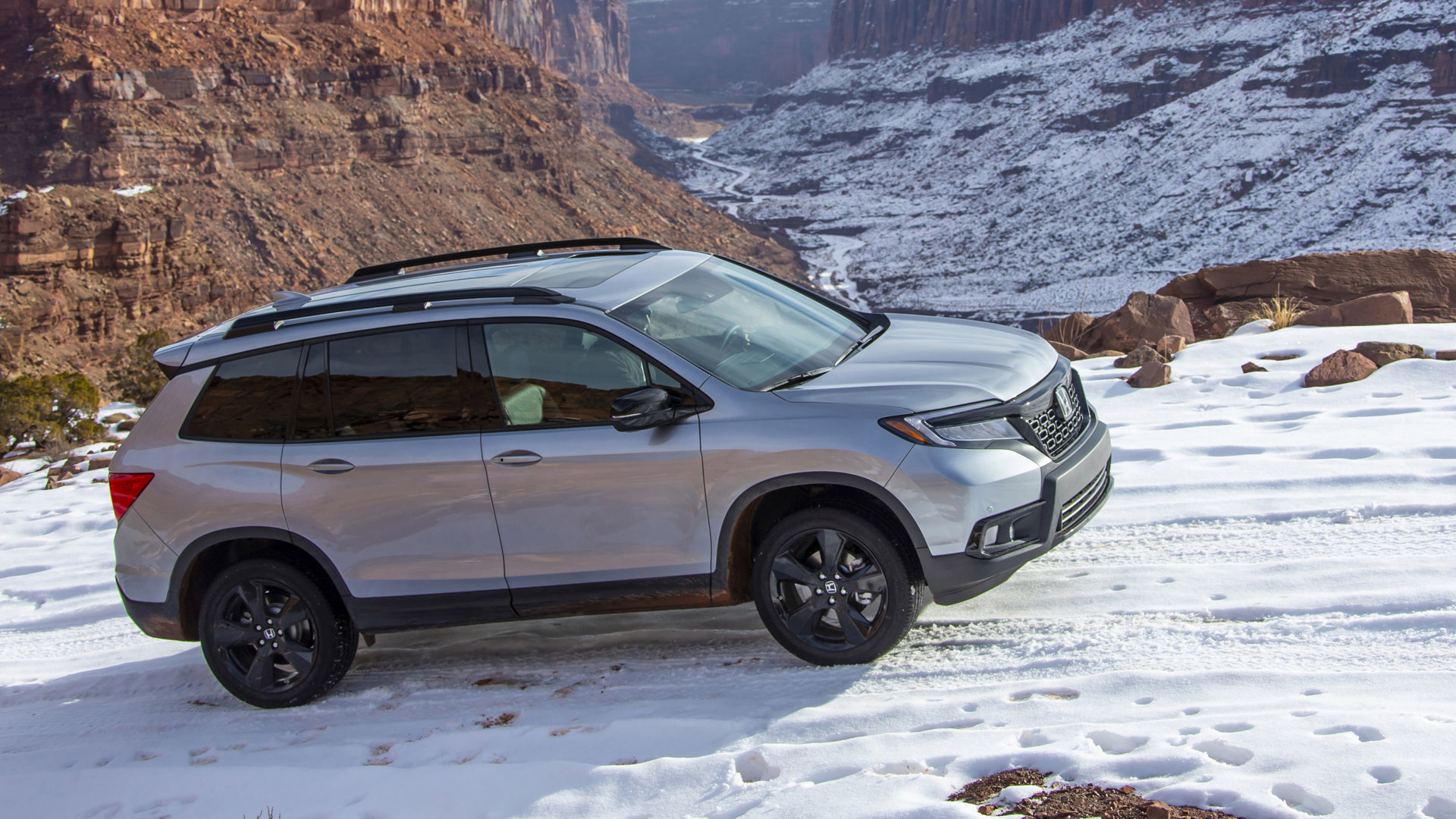
Honda Passport
When it shortened the three-row Honda Pilot to create the smaller Passport, Honda tried to add a little more sport and a little more off-road utility with the new model. The sport comes by way of the shorter size and lighter weight, meaning that there’s less here for the 280-hp 3.5L V6 to move around, so it feels more agile and less like a minivan. For this model, Honda also swapped the chrome trim with gloss black for a more aggressive look. The off-road utility comes from 27 mm more ground clearance than the Pilot and the shorter overhangs that are the result of the new front and rear fascias, giving it some additional off-road capability.
We also love the 2,205L of cargo space and the generous seating for five with loads of cubbies for storage of all the items you and your passengers bring along. One of our automotive experts, Justin Pritchard, called the Passport “a cornucopia of cubbies.” The nine-speed automatic transmission helps deliver good fuel economy, plus paddle shifters help you control the revs on and off the pavement. In typical Honda form, it’s also loaded with driver aids like radar cruise control, forward collision warning, collision mitigation braking, lane-keeping assist, and road departure mitigation.

Mazda CX-5
Ranging from a base price of $27,850 all the way to $45,950, Mazda offers an array of CX-5s to suit your needs. Starting with the base front-drive model with a 187-hp 2.5L four-cylinder engine, through the available 250-hp 2.5L turbocharged four-cylinder and at the top-of-the-line 2.2L diesel with 290 lb-ft of torque, the CX-5 offers plenty of powertrain options. The CX-5’s interior is one of the nicest and most upscale in its segment, and the design and quality punches above its price. With Mazda’s sharp yet clean design language and excellent materials like the soft Napa leather seats on Signature-line models, the CX-5 can almost pass as a luxury vehicle. Where the CX-5 falls short is cargo capacity and room for passengers, as both are sacrificed for style.
The CX-5 offers Android Auto and Apple CarPlay phone connectivity, and dynamic connectivity to the road thanks to the G-Vectoring control that balances throttle and brake for better turn-in and reduced body roll. This is definitely one of the best driving vehicles in its class. Heated front seats are standard across the board, with a heated steering wheel and ventilated seats on top trims.
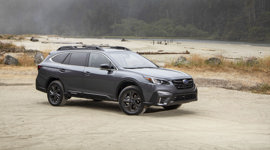
Subaru Outback
It might not look that different on the outside, but the 2020 Subaru Outback is completely new underneath. The new one is quieter, has a larger infotainment system screen, and it gets a turbocharged engine again. That’s right, a 2.5L 182-hp four-cylinder engine is standard, but the XT gets a 2.4L turbocharged engine from the larger Ascent that makes 260 hp. Both engines are paired with Subaru’s CVT, which is one of the better examples of such transmissions, and every Outback comes standard with all-wheel drive. Inside, there’s a huge tablet-sized touchscreen available and Subaru has made huge strides in making its cabin more comfortable and inviting.
The Outback is about going, well, out back. Out of the way. Off the road. So in addition to all that cargo space, it’s higher off the ground than the Legacy it shares a platform with. That off-road intent is why it has new fold-away roof-rack crossbars standard: so you can quickly toss a tent, or a kayak, or a bike up there. If you’re not convinced this is a good crossover, the 2,144L of rear space might help. Safety is also an important part of the Outback: The crossover comes standard with Subaru EyeSight, the brand’s suite of safety and driver assistance equipment. It’s also available with Subaru’s DriverFocus Distraction Mitigation System, which helps drivers keep their eyes on the road.
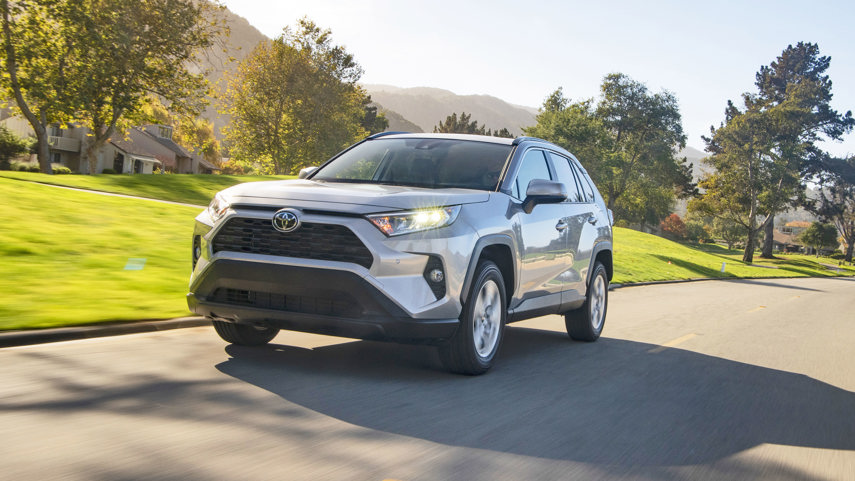
Toyota RAV4
Toyota’s RAV4 was one of the very first compact crossovers on the market and has fought back and forth with Honda’s CR-V for the title of Canada’s best-selling crossover, an achievement it looks to snag for the fourth time in a row this year. The RAV4’s continued popularity is not a surprise, as the crossover has been completely overhauled recently to add stylish looks to its well-known arsenal of reliability, safety, and resale value. That’s right, looking more like its bigger siblings the Tacoma and 4Runner, the new RAV is almost mean-looking. On the inside, though, it’s a little softer with an attractive and practical design.
With creature comforts like available heated and ventilated seats, and the fact that Toyota is finally adding Apple CarPlay and Android Auto, the RAV4 is a pleasant place to be. Toyota offers a choice of gas and gas-electric hybrid drivelines, which makes it unique in this segment. The former is a 203-hp 2.5L four-cylinder, the latter offers 219 hp with the 2.5L four-cylinder and electric motors combined. The hybrid system gives this one a class-leading 6.0L/100 km combined fuel economy rating, helping it save you money at the pumps. Toyota also offers the RAV4 with its full line of active safety features standard across the board.
